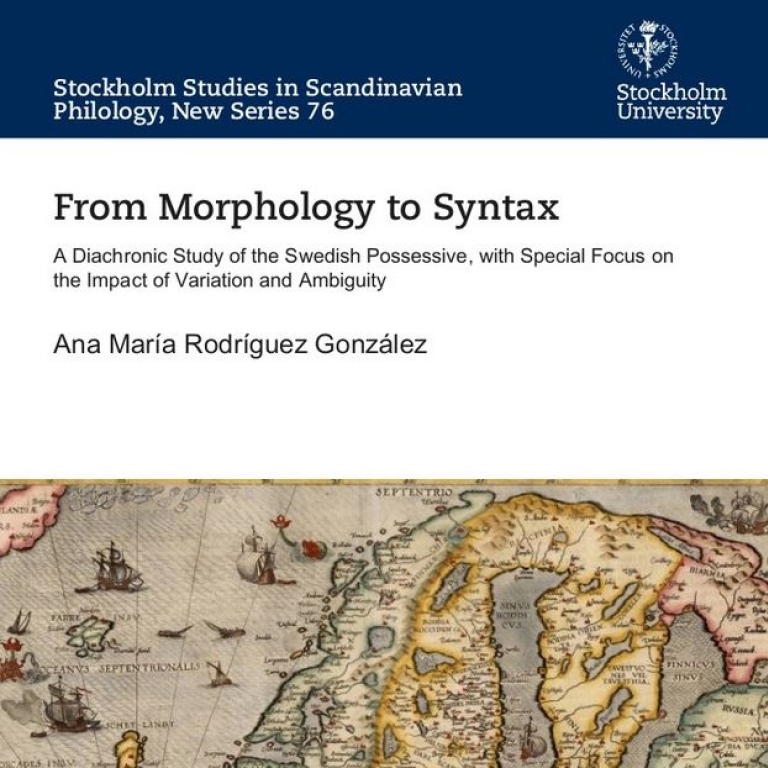New doctoral thesis 2025: From Morphology to Syntax
Ana Rodríguez González defended her doctoral thesis in Scandinavian Languages in 2025: From Morphology to Syntax. A Diachronic Study of the Swedish Possessive, with Special Focus on the Impact of Variation and Ambiguity. Department of Swedish Language and Multilingualism at Stockholm University.

This thesis focuses on changes in possessive marking in the history of Swedish by means of the study of legal texts written between the Old and Early Modern Swedish periods (from 1281 to 1695). Using a combination of qualitative and quantitative methods, my aim is to shed light on these changes and to understand the factors driving them.

My first research question is how the transition of the Swedish possessive marking, from genitive case to the use of an enclitic possessive-s, can be described in more detail. Three systems have been discerned: System I is a purely morphological system with genitive case and full overt concordial agreement within the possessor noun phrase. System II is a system without full overt concordial agreement within the possessor noun phrase, but where possession, in addition, is marked with a possessive-s (or a possessive-Ø). System III is a purely syntactic system where the possessive-s is the only way to express possession. The quantitative results show an overlap between these systems from the late 14th to the late 17th century. A detailed examination of System II reveals that the enclitic possessive-s is an innovation. According to my analysis it is located in the head of a DPOSSP. Instances of double possessive marking, where genitive case and possessive-s coexisted, corroborate my hypothesis meaning that the modern possessive-s is a new syntactic possessive marker and is not the result of a reanalysis of the old genitive case suffix -s. A closer analysis shows that they are two different morphemes with different feature set-ups.
My second research question is how the change can be explained from a language acquisition perspective and in the light of our general knowledge of language change. I have argued that ambiguity in the possessive marking played a central role in the change. Using a micro-cue approach to children’s acquisition of possessive marking (e.g., Lightfoot & Westergaard 2007), I argue that children are sensitive to and rely on fine syntactic distinctions in the acquisition of the Swedish possessive marking. Morphological ambiguities that are caused by phonetic reductions such as the weakening of word-final /a/ to schwa and the loss of concordial agreement rendered genitive case less and less learnable. Consequently, the syntactic possessive-s took over.
My third research question is how different grammatical levels interact in the change from System I to System III. I show that phonetic changes in the vowel quality gave rise to morphological changes in the nominal system that resulted in ambiguous genitive markings and the loss of concordial agreement. Additionally, syntactic developments in noun phrase structure such as more rigid prenominal word order and the rise of definiteness and the article system, further facilitated the rise of a new syntactic possessive construction (namely DPOSSP). Another underlying factor driving the change is the general drift (at least in the Indo-European languages) from morphology to syntax. Thus, a number of factors contributed to the decline of genitive case and the establishment of possessive-s as the dominant marker.
The results of my thesis provide new insights into how Swedish possessive marking changed from a morphology-based system to a syntax-based one and have implications for the debate on the origins of the modern possessive-s. A significant implication of my findings is the importance of ambiguity in language change.
Last updated: June 25, 2025
Source: Department of Swedish Language and Multilingualism

